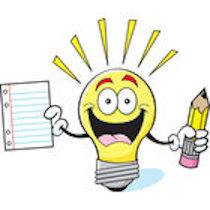Today, poetry is often defined as putting the greatest amount of meaning into the fewest possible words. This holds true for song lyrics, too. So if you’re a poet, you’ve got a great start on songwriting. But there are some big differences, too.
The bards of old sang their poems, often based on historical tales. The melody helped both the bard and the audience remember long oral histories. But now we tend to write and read poetry on the page. Readers can go through a poem at their own pace, taking all the time they need to understand and react to each line.
But songs roll by at the music’s pace. Listeners need to understand enough on the fly to be drawn into the lyric and stay involved. To turn a poem into a lyric, you’ll need to take that into account.
1. Give listeners enough time to absorb an image or poetic device.
Try spreading out your images and metaphors over several lines rather than piling on several at once. Make each image or idea the focus of at least one line. If your lines are short, then spend two or more lines on it. Add more information to give listeners deeper insight into your idea and allow them to fully take it in before moving on.


